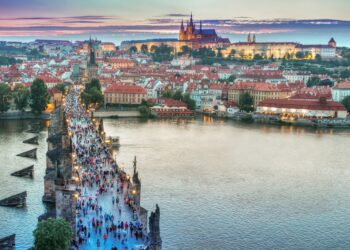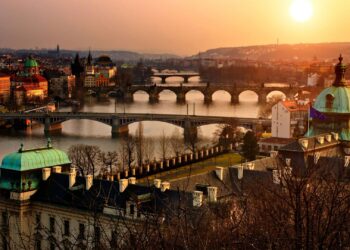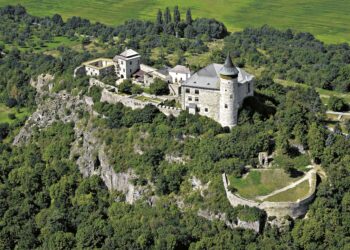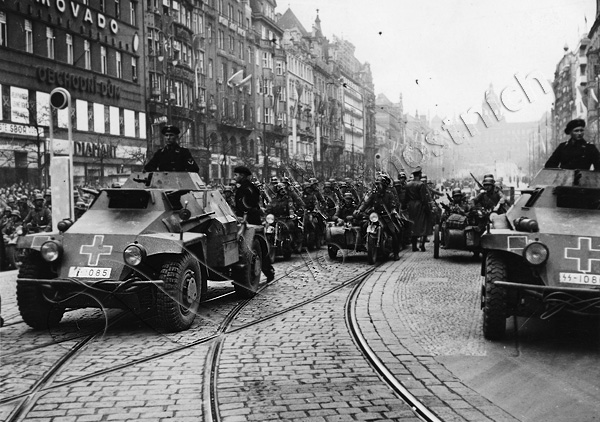HISTORY
The Bohemian lands which make up the present-day Czechia have often been at the center of important historic events affecting larger Europe, as they lie on one of the continent’s major economic and cultural crossroads. In the 9th century, the Christian missionaries Cyril and Methodius arrived in Moravia to introduce a written Slavonic language as the language of the Old Church Slavonic liturgy. The future of today’s Czechia dates from this period with the arrival of the Přemyslid dynasty. Bohemia and Prague would later become the heart of the mighty Holy Roman Empire, enjoying its “Golden Age” under the rule of Holy Roman Emperor Charles IV in the 14th century.
With the defeat of the Bohemian protestant reformers at the Battle of White Mountain in 1620, the Austro-Hungarian Habsburg monarchy took over the Czech lands and imposed a harsh Counter Reformation policy of recatholization. It was more than two hundred years later that the Czech National Revival movement began in the 18th and 19th centuries in an attempt to revive the Czech national identity and language.
The Velvet Revolution of 17 November 1989 ended Communist rule in Czechoslovakia. A few years later, on 1 January 1993, the country peacefully split into two independent states: the Czech Republic and Slovak Republic.
Following the defeat of the Habsburg Austro-Hungarian Empire in World War I, the newly independent state of Czechoslovakia was established on 28 October 1918. The first president of Czechoslovakia was Tomáš Garrigue Masaryk.
World War II and its aftermath represent one of the darkest chapters in the history of the Czech Republic. Slovakia decided to support the fascist leaders. In 1939, the rest of Czechoslovakia was annexed by Nazi Germany and became the German Protectorate of Bohemia and Moravia. This only ended when the country was liberated by Soviet and American troops at the end of WWII. The Communist coup d’état in 1948 resulted in forty years of Communist totalitarianism. The Velvet Revolution of 17 November 1989 ended Communist rule, and on 1 January 1993, Czechoslovakia peacefully split up into two independent states: the Czech Republic and Slovak Republic. The dissident and playwright Václav Havel became the first president of the Czech Republic, one of Western Europe’s new parliamentary democracies. The country joined NATO in 1999 and was admitted into the European Union (EU) in 2004.
A Brief History of the Czech Republic
The following is a rough historical outline of key periods in the history of today’s Czechia: the Great Moravian Empire (9th century), the Premyslid Dynasty (9-14th century), the Luxembourg Dynasty (14-15th century), the Hussite Revolution (1419 – 1436), the Jagellon Dynasty (15-16th century), the Habsburg Dynasty (16-20th century), the foundation of the modern Czech nation and independent statehood (since 1918).
4th Century BC: the Celts
- Around the 4th century BC, the present-day lands of Czechia were settled by Celtic tribes, the first people known by name to occupy this area. One of the Celtic tribes were the Boii (plural), who gave the Czech lands their first name Boiohaemum, Latin for the “Land of Boii”. Later, they were pushed out by Germanic tribes (Marcomanni, Quidi).

- Around the 4th century BC, the present-day lands of Czechia were settled by Celtic tribes, the first people known by name to occupy this area. One of the Celtic tribes were the Boii (plural), who gave the Czech lands their first name Boiohaemum, Latin for the “Land of Boii”. Later, they were pushed out by Germanic tribes (Marcomanni, Quidi).
5th-6th Century AD: Arrival of the Slavs
- At the end of 5th and the beginning of 6th century AD, Slavic tribes moved in and settled in the lands of Bohemia and Moravia. The first half of the 7th century marks the first successful attempt to unite these Slavic tribes with the formation of what is known as “Samo’s Kingdom”.

- At the end of 5th and the beginning of 6th century AD, Slavic tribes moved in and settled in the lands of Bohemia and Moravia. The first half of the 7th century marks the first successful attempt to unite these Slavic tribes with the formation of what is known as “Samo’s Kingdom”.
Second Half of the 9th Century: Arrival of Christian Missionaries
- During the final two-thirds of the 9th century, the Great Moravian Empire was created, only to be destroyed by the Magyars in 903-907.
- The Great Moravian Empire was a major influence on the development of the culture and religion of the Eastern and Southern Slavs. In 863, the Byzantine Empire’s Christian missionaries Cyril and Methodius came to Moravia to introduce a Slavic church liturgy. It was not to be, as the influence of the Roman Catholic Church proved too strong, and this influence was to have a major impact on the course of history in Bohemia and Moravia.
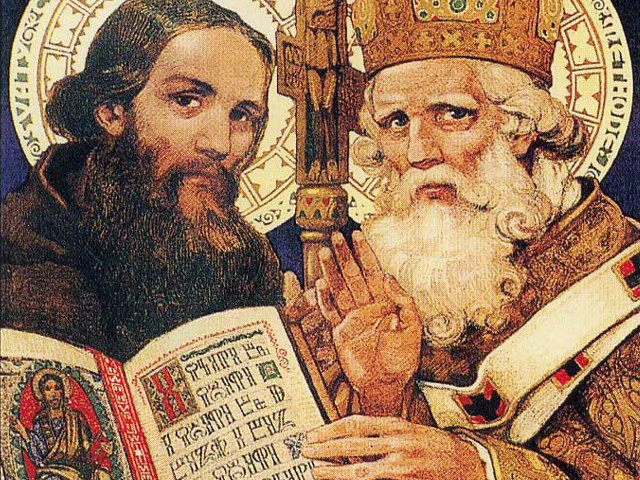
9th Century – 1306 (a gradual strengthening of the Czech state during the reign of the Premyslid dynasty)
- Under the rule of the Premyslids, the Czech state gradually grew in strength. It retained its own sovereignty while also being a vassal state that was part of the Holy Roman Empire.
- 935: death of Prince Wenceslas, the patron saint of Bohemia
- 973-976: establishment of the Prague Bishopric
- 1085: Vratislav becomes the first Bohemian prince to be granted the right to use a royal title (king), as a reward for his support of Emperor Henry IV during his struggle with Pope Gregory VII.
- 1212: Premysl Otakar I receives The Golden Bull of Sicily, a decree proclaiming Bohemia a kingdom and Bohemian princes hereditary kings. Bohemia thus became one of the most important states within the Holy Roman Empire.
- 1253-1278: the reign of the powerful king Premysl Otakar II, is characterized by a policy of expansion of power. This expansionist tendency continued with the following reigns of the Premyslid dynasty.
- 1306: murder of Wenceslas III and the end of the Premyslid dynasty.
1346-1378: Charles IV from the House of Luxembourg (the high point in the prestige and power of the kingdom of Bohemia)
- The reign of a new dynasty begins when John of Luxembourg (1310-1346) is elected King of Bohemia in 1310. The Luxembourg kings thus added new territories to their realm. The Czech lands were called “The Crown Lands of Bohemia” (also the “Lands of the Bohemian Crown”), a term made official by a decree of Charles IV in 1348. The official Crown Lands were made up of the Kingdom of Bohemia and the so-called adjoining lands: the Margravate of Moravia, the Silesian principalities, Upper Lusatia, and, from 1368, Lower Lusatia.
- The Kingdom of Bohemia reached its peak of power and prestige during the reign of Charles IV (1346-1378), the second member of the Luxembourg dynasty to sit on the throne of Bohemia. In 1344, the Prague Archbishopric was founded; in 1348, Charles University, the first university north of the Alps, was founded; and in 1355, Charles IV was crowned Holy Roman Emperor in Rome.

Beginning of the 15th Century: A Crisis of State and the Hussites
- A political and religious reform movement called the Hussite Revolution (1419 – 1436) was, at least in part, caused by the economic and political crisis that arose during the reign of Wenceslas IV (1378-1419), the successor to Charles IV. This crisis was exacerbated by the problems in Europe at the time (the Great Schism, criticism of the Church). The Hussite movement was inspired by the ideas of Master Jan Hus, a preacher who was burnt at the stake in Constance, Germany, in 1415. Despite his death, his supporters successfully continued in their efforts to reform the Church.
- As heir to the crown of Bohemia, the Roman Emperor Sigismund tried to defeat the growing revolution with force, but the Hussites resisted his five consecutive crusades between 1420 and 1431. Only the victory of 1434, when the moderates defeated the radicals, opened the way for a temporary agreement between Hussite Bohemia and Catholic Europe. This agreement, The Compacts of Basel, was proclaimed in 1436 and confirmed the Hussite denomination, and it would later have parallels in the Protestant Reformation of the 16th century. The Hussite movement changed the structure of society in many ways and created a religious dualism for the first time in Christian Europe.
- With the decline in the Catholic Church’s power and wealth, the nobility and towns were able to profit. The Czech nation (Bohemia and Bohemian culture) were in the ascendancy. In the years of unrest between the Catholic church and nobility, a Czech Hussite noble – George of Podebrady, a skillful diplomat and strong personality — rose to the forefront of Czech political life and was elected King of Bohemia in 1458. His diplomatic activities – notably his effort to establish a peaceful confederation of the European sovereigns – stretched beyond the horizon of central Europe.
1471 – 1526: The Jagellon Dynasty
- 1471-1516: Vladislav Jagellon, a son of King Cazimir of Poland, was elected King of Bohemia. During the reigns of Vladislav and his son Louis, the power of the anti-Catholic Czech Protestant Bohemian Estates grew, while royal power diminished. The conflict between royal towns and the nobility increased, which was compounded by the religious struggles between the greater power of the Hussite Church and the lesser power of the Catholic Church, which sought to reestablish its former ultimate authority.
1526 – 1918: The Habsburg Dynasty Rules Bohemia
- The Austro-Hungarian Habsburgs succeeded to the throne of Bohemia when the Jagellon line died out. Habsburg rule brought about a re-introduction of the Roman Catholic faith, a centralization of authority, and participation in a multi-national state. The Habsburgs incorporated the Crown Lands of Bohemia into their empire, and this territory remained a part of the Habsburg empire until 1918.
- 1620: the defeat of the Protestant Bohemian Estates at the Battle of White Mountain continued the centralization of the Habsburg Empire
- When the Hapsburg Rudolf II (1576-1611), Holy Roman Emperor and King of Bohemia, left Vienna for Prague, the Bohemian capital grew into an important center of European culture. The anti-Catholic Czech Estates forced Rudolf II to issue a decree – the “Maiestatus” – proclaiming freedom of religious confession. The Hapsburg Holy Roman Emperors Matthias and Ferdinand tried to limit this freedom, and their efforts sparked a civil war between the Protestant Bohemian Estates and the Catholic Emperor that later spread throughout all of Europe – the famed Thirty Years’ War. The Czechs elected an independent king; the Estates, however, were defeated in 1620 at the Battle of the White Mountain, and the Kingdom of Bohemia lost its independence for the next almost 300 years. The period of the Thirty Years’ War was one of political upheaval and economic devastation throughout Bohemia. It was to have far-reaching consequences on the future development of the country. The people of Bohemia were forced to accept the Catholic faith or emigrate. The throne of Bohemia was made hereditary for the Habsburg rulers, and the most important offices were transferred permanently to their seat of power and authority in Vienna.
- After the Thirty Years’ War, high Baroque culture became deeply rooted in Bohemia, and the Czech Baroque style influenced the architecture of Czech towns and villages for several centuries.
- A crisis of feudalism and the fiscal interests of the state led to what more broadly in Europe was referred to as the Enlightenment or, in the case of the Austrian Empire, Enlightened Absolutism. It was supported by the German Maria Theresa, Archduchess of Austria, wife and empress of Holy Roman Emperor Francis I (reigned 1745–65), and mother of Holy Roman Emperor Joseph II (reigned 1765–90). These Enlightened Absolutism reforms brought some positive changes to Bohemia and the Margravate of Moravia as each became an independent part of the Habsburg Monarchy. There were some negative results as well, as the reforms contributed to the centralization of power and greater Germanization (both culturally and linguistically), both of which proved to be a serious threat to the identity of the Slavic nationalities within the empire.

28.10.1918: Birth of an Independent Czechoslovakian State
- Although the Czech national revival movement originally just endeavored to revive Czech language and culture, it soon began to strive for a greater degree of political emancipation. In the revolutionary year 1848, Czech politicians made the first coherent political propositions aimed at reconstituting the Austrian Empire as a federation of states. This desire for greater political freedom was furthered by the rapid industrialization of Bohemia, which took place in the country in the latter part of the 19th century. Bohemia became the most heavily industrialized part of the Austro-Hungarian Empire during this period.
- During the period of the First World War, Czech nationalist politics took a turn towards radicalism as a result of the activities abroad of T. G. Masaryk and E. Beneš, both future presidents of what would soon become Czechoslovakia. The defeat of the Austro-Hungarian Empire in WWI cleared the way for the foundation of a new independent post-war state for Czechs and Slovaks (28 October 1918). The new Czechoslovak Republic became one of the ten most developed countries of the world. A period of twenty years of democracy and prosperity was ended by the Munich Conference and the resulting Munich Agreement (30 September 1938), which allowed for the German occupation of the country and, on 15 March 1939, brought the country’s independence to an end.
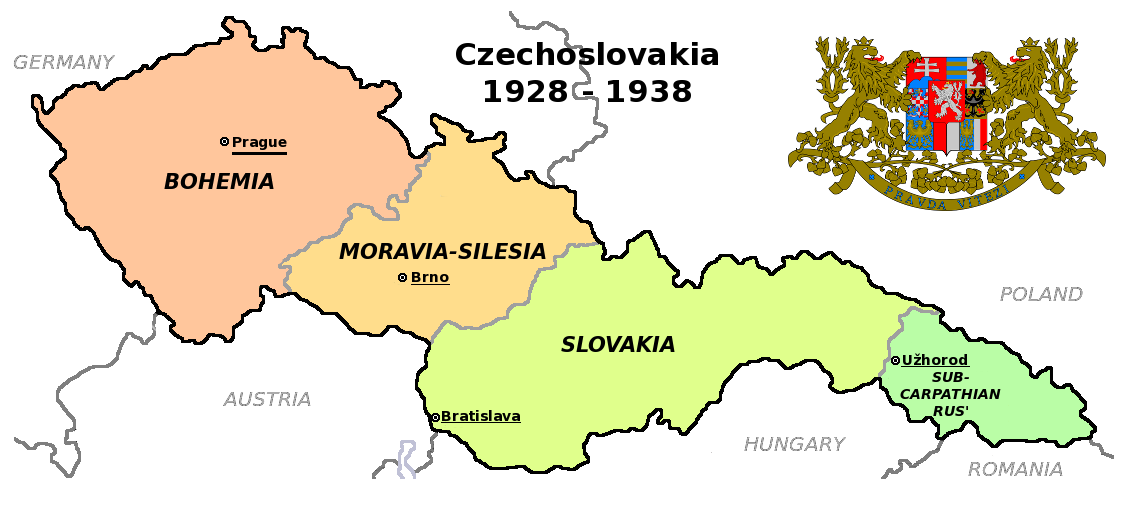
15.3.1939 – 9.5.1945: World War II and German Occupation
- In October 1938, the Nazis occupied the Czech Sudetenland, with the acquiescence of Great Britain and France after the infamous Munich Agreement. In March 1939, Germany occupied Bohemia and Moravia.
February 1948: Communist Takeover
- After World War II, the restored republic fell under the Soviet sphere of influence. A period of “limited” post-war democracy ended with the Communist takeover of the country in February 1948. All private property was expropriated and political and human rights suppressed. In August 1968, there was the Prague Spring, an attempt to change and humanize the harshness of the country’s Communist rulers and to weaken its ties to the Soviet Union. It failed when Soviet and Warsaw Pact armies invaded the country in August 1968.

November 1989: Fall of the Communist Regime
- There had been a gradual and growing disenchantment with the country’s Communist rulers, and with Gorbachev’s decision to loosen the Soviet yoke on the countries of Eastern Europe, the Czechs erupted into mass protests and demonstrations known as the Velvet Revolution. This led to the overthrow of the country’s Communist regime in November 1989. These changes were confirmed by the election of Vaclav Havel as the new president of the Czechoslovak Republic in the following year.

1.1. 1993: Today’s Czech Republic (founded after the peaceful separation of Czechoslovakia into separate Czech and Slovak states)
- On 1 January 1993, the Czechoslovak state was peacefully separated into the independent Czech and Slovak Republics. Václav Havel was elected the Czech Republic’s first president. In the following years, the Czech Republic joined the Organization for Economic Cooperation and Development (OECD )(1994), NATO (1999) and the EU (2004). Today’s Czechs have successfully completed the transformation of their formerly centralized state system into a parliamentary democracy and market economy.
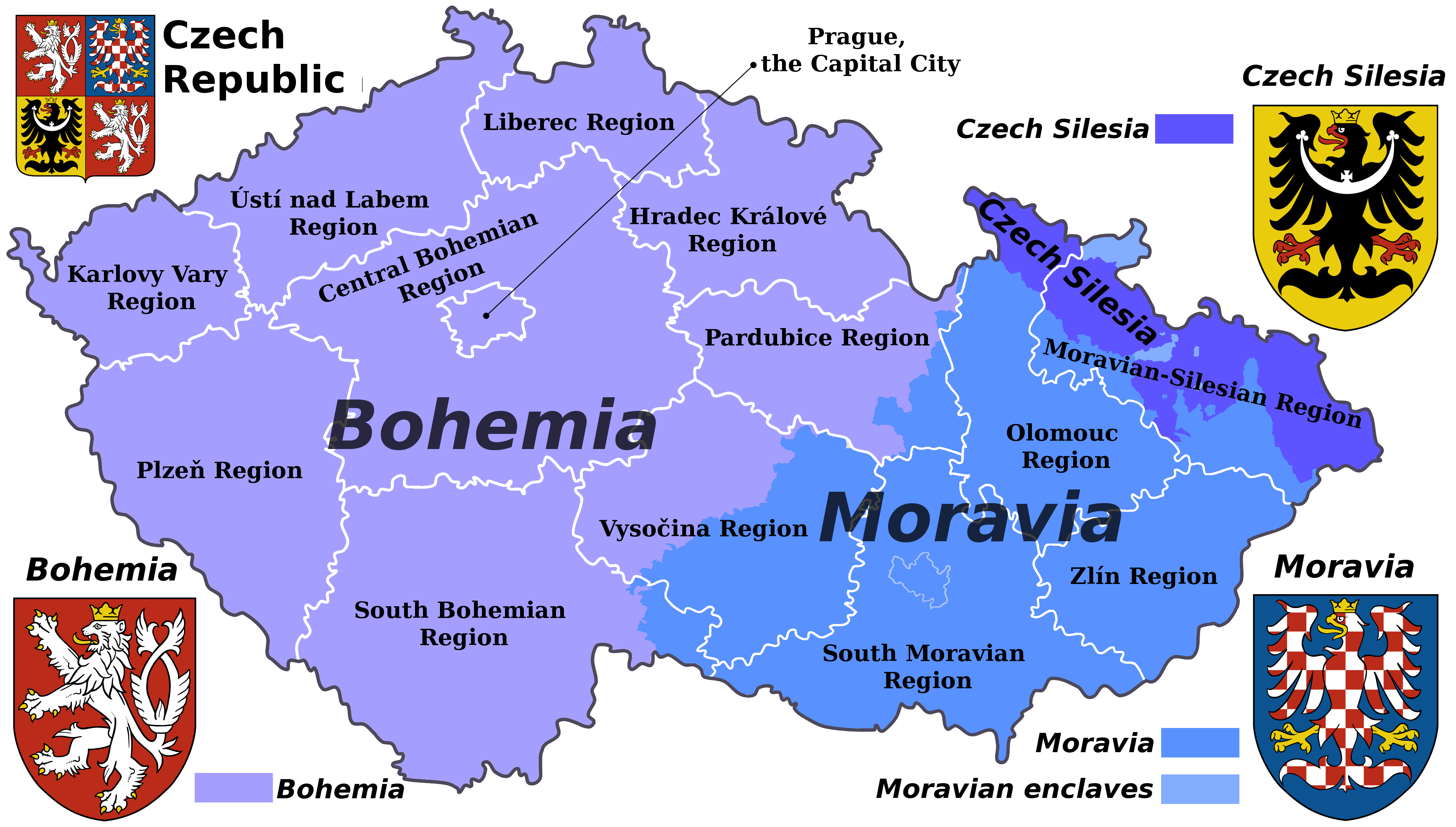
© 2022 Ministry of Foreign Affairs



